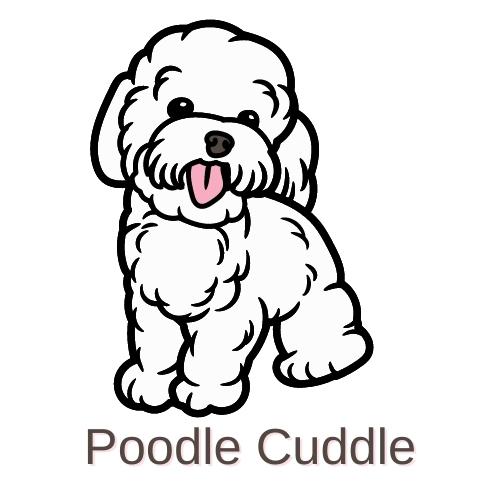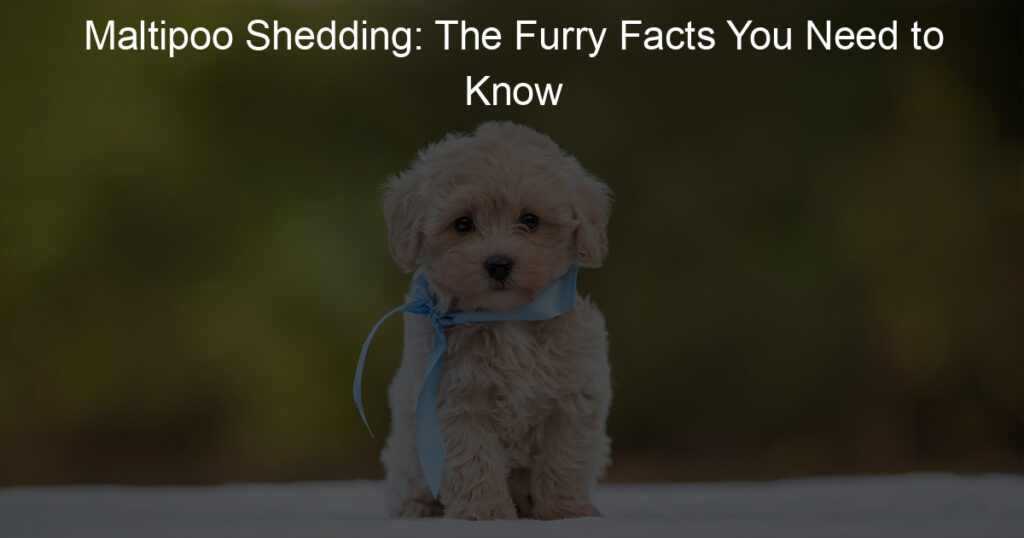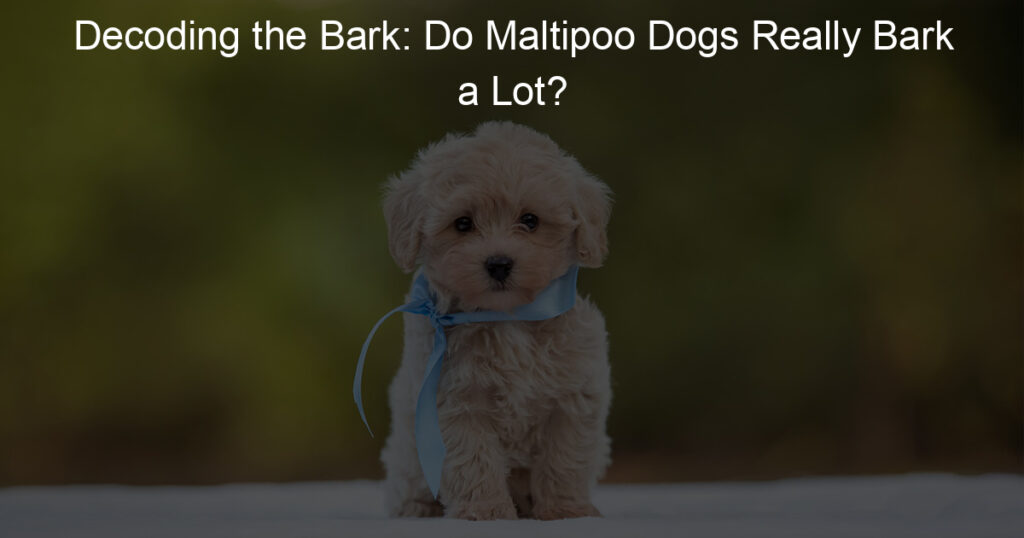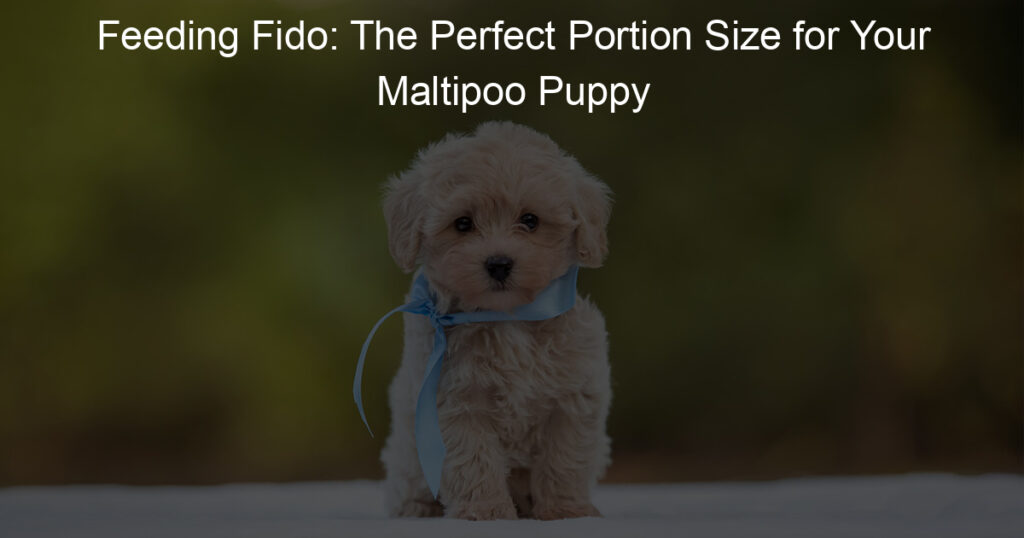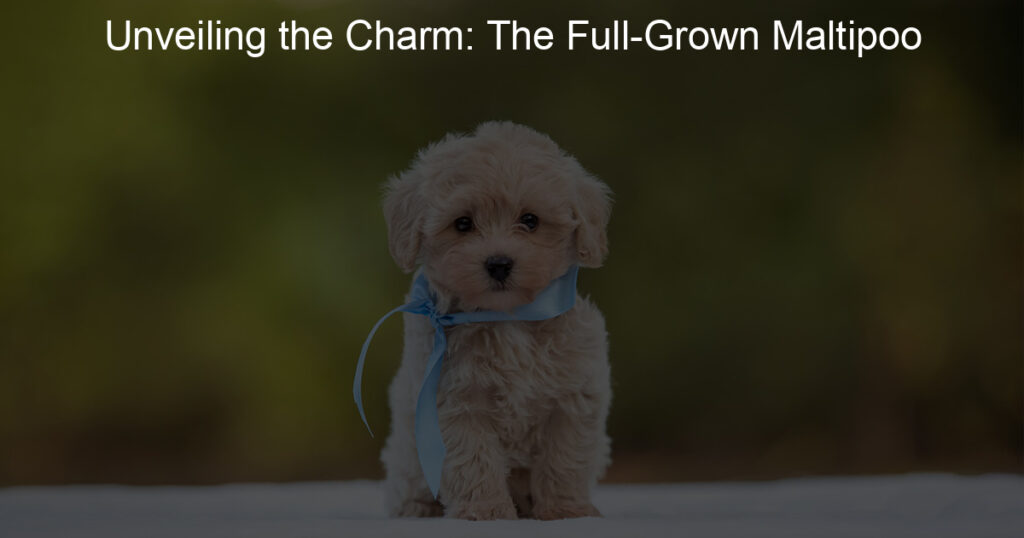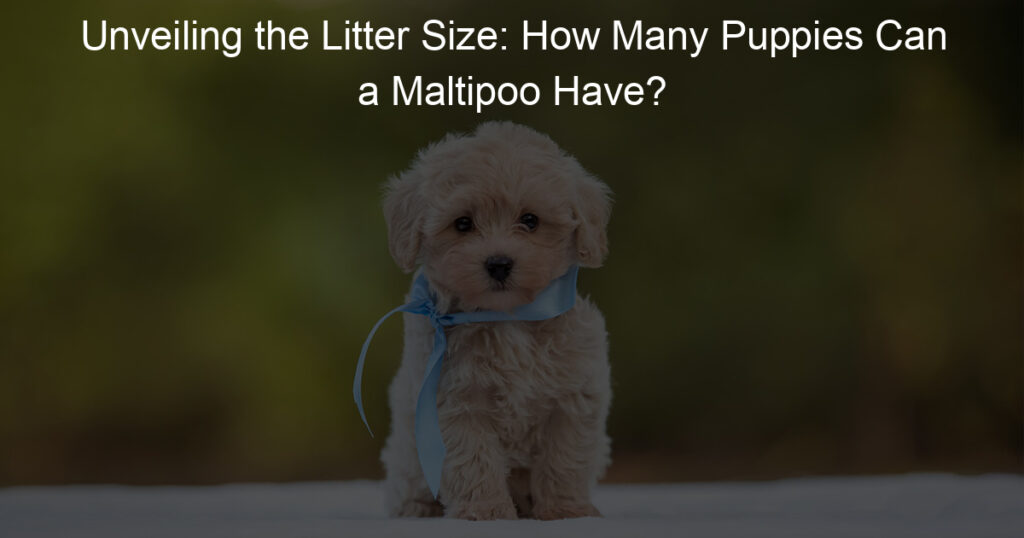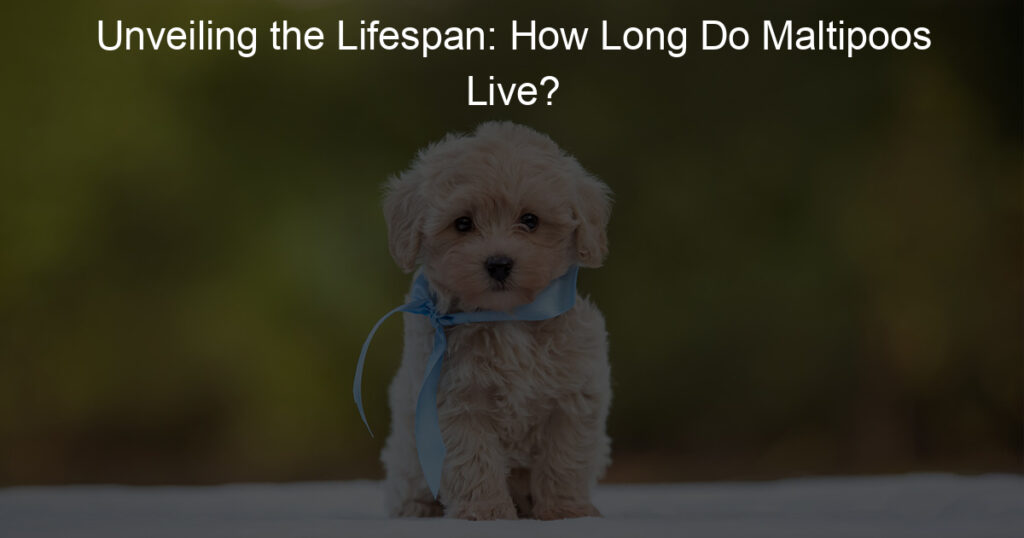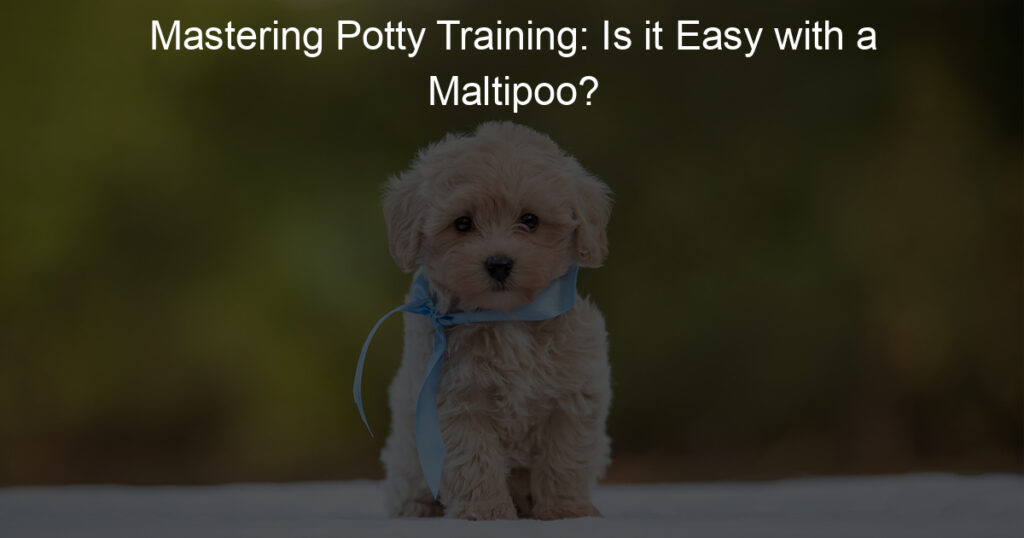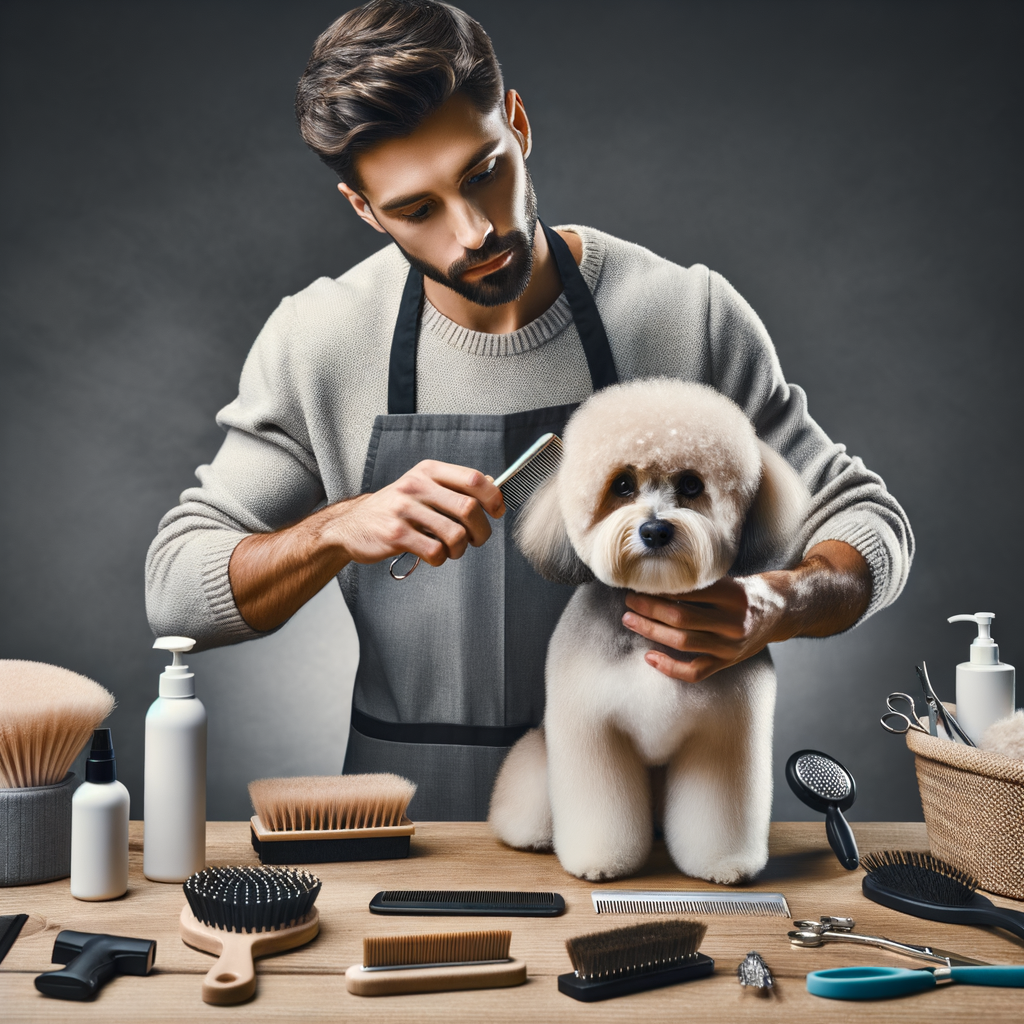
Understanding Maltipoo Shedding
Shedding is a natural process for most dogs, including the adorable Maltipoo breed. However, understanding the specifics of Maltipoo shedding can help you better care for your furry friend. Let’s delve into the details.
- What is Maltipoo shedding?
- Why does Maltipoo shedding occur?
- How much do Maltipoos shed?
Maltipoo shedding refers to the process where your Maltipoo loses its old or damaged hair. This is a normal occurrence and is part of the hair growth cycle. However, Maltipoos are known as low-shedding dogs due to their Poodle heritage, which means they shed less compared to other breeds.
Shedding in Maltipoos occurs for several reasons. The primary reason is the natural cycle of hair growth and loss. Just like humans, dogs lose old or damaged hair. Other factors like diet, health, and environmental conditions can also influence the rate of shedding.
As mentioned earlier, Maltipoos are considered low-shedding dogs. However, the amount they shed can vary based on factors like their overall health, diet, and the time of year. Generally, you might notice a slight increase in shedding during the change of seasons, but it’s usually not excessive.
Understanding your Maltipoo’s shedding patterns can help you provide the best care for your pet. Regular grooming and a healthy diet can help manage shedding and keep your Maltipoo’s coat looking its best.
Maltipoo Hair Loss
One of the most concerning issues for Maltipoo owners is hair loss. This can be quite distressing, as the Maltipoo’s fluffy coat is one of its most charming features. Let’s explore the common causes, how to identify, and treatment options for Maltipoo hair loss.
- Common causes of Maltipoo hair loss
- Allergies: Maltipoos can be allergic to certain foods, environmental factors, or substances they come into contact with. This can lead to itching and hair loss.
- Parasites: Fleas, ticks, and mites can cause severe itching and subsequent hair loss.
- Hormonal imbalances: Conditions like hypothyroidism can lead to hair loss in Maltipoos.
- Genetic factors: Some Maltipoos may be genetically predisposed to hair loss.
- How to identify Maltipoo hair loss
- Bald patches: If you notice any bald spots on your Maltipoo’s coat, this could be a sign of hair loss.
- Excessive scratching: If your Maltipoo is constantly scratching or biting at their skin, it could indicate a problem.
- Changes in behavior: Changes in your Maltipoo’s behavior, such as lethargy or decreased appetite, could be a sign of an underlying issue causing hair loss.
- Treatment options for Maltipoo hair loss
- Medication: If the hair loss is due to a medical condition, your vet may prescribe medication to treat the underlying issue.
- Dietary changes: If your Maltipoo’s hair loss is due to a food allergy, changing their diet may help.
- Parasite control: If parasites are causing the hair loss, your vet will likely recommend a flea and tick prevention program.
- Special shampoos or creams: In some cases, special shampoos or creams may help soothe the skin and promote hair growth.
There are several reasons why a Maltipoo might experience hair loss. These include:
Identifying hair loss in Maltipoos can be tricky due to their fluffy coats. However, there are a few signs you can look out for:
Treating hair loss in Maltipoos depends on the underlying cause. Here are a few treatment options:
Remember, if you notice any signs of hair loss in your Maltipoo, it’s important to consult with a veterinarian. They can help identify the cause and recommend the best course of treatment.
Maltipoo Fur Care
Proper fur care is essential for your Maltipoo’s health and appearance. This section will guide you through the basics of Maltipoo grooming, including how often to groom, the best tools to use, and tips to reduce shedding.
Maltipoo Grooming
Grooming your Maltipoo not only keeps them looking their best, but it also helps to keep their skin and coat healthy. Here are some key points to consider:
- How often should you groom your Maltipoo?
- Best grooming tools for Maltipoos
- Grooming tips to reduce Maltipoo shedding
For a Maltipoo, grooming should be a regular part of their care routine. Ideally, you should brush your Maltipoo at least 2-3 times a week to prevent matting and tangling. Full grooming, including a bath and haircut, should be done every 4-6 weeks. Regular grooming helps to keep your Maltipoo’s coat in good condition and reduces shedding.
When it comes to grooming your Maltipoo, the right tools can make all the difference. A slicker brush is a must-have for removing loose hair and preventing tangles. A comb with both wide and narrow teeth can be useful for different parts of your Maltipoo’s coat. For trimming, a pair of rounded-tip scissors and a good quality clipper set are recommended.
While Maltipoos are known for their low-shedding coats, regular grooming can help to further minimize shedding. Regular brushing helps to remove loose hair before it falls out. Using a conditioner after shampooing can help to keep your Maltipoo’s coat healthy and reduce shedding. Additionally, providing your Maltipoo with a balanced diet and plenty of water can also help to maintain a healthy coat and minimize shedding.
In conclusion, regular grooming is essential for maintaining your Maltipoo’s coat. With the right tools and techniques, you can keep your Maltipoo looking their best and reduce shedding.
Maltipoo Coat Maintenance
Keeping your Maltipoo’s coat healthy and shiny is a crucial part of their overall wellbeing. Let’s delve into the best practices for maintaining a Maltipoo’s coat, the products you should use, and how to tackle common coat problems.
- How to maintain a healthy Maltipoo coat
- Products for Maltipoo coat maintenance
- Common Maltipoo coat problems and solutions
Maintaining a healthy Maltipoo coat starts with regular grooming. Brush your Maltipoo’s coat at least three times a week to prevent matting and tangling. Regular baths, ideally once a month, can also help keep their coat clean and shiny. It’s also important to provide a balanced diet, as nutrition plays a significant role in coat health. Foods rich in Omega-3 fatty acids can help promote a glossy coat.
When it comes to products for maintaining your Maltipoo’s coat, choose a high-quality dog shampoo and conditioner. Look for products that are free from harsh chemicals and are designed for dogs with curly or long hair. A slicker brush is also a must-have tool for removing loose hair and preventing tangles. Additionally, consider investing in a good quality pet hair dryer to speed up the drying process after baths and prevent matting.
Like all breeds, Maltipoos can experience a few common coat problems. These include matting, dry skin, and shedding. To prevent matting, regular brushing is essential. If your Maltipoo has dry skin, consider using a moisturizing shampoo or adding a skin and coat supplement to their diet. As for shedding, while Maltipoos are low-shedding dogs, they can still lose some hair. Regular grooming and a balanced diet can help manage this.
In conclusion, maintaining a healthy Maltipoo coat requires regular grooming, the right products, and a good diet. By following these tips, you can help ensure your Maltipoo’s coat stays shiny, healthy, and mat-free.
Non-Shedding Dog Breeds
Non-shedding dog breeds are a popular choice for many pet owners. These dogs are known for their hypoallergenic properties and are ideal for those who suffer from allergies. But what makes a dog breed non-shedding? Let’s delve into this topic.
- What makes a dog breed non-shedding?
- Examples of non-shedding dog breeds
- Comparing Maltipoo shedding to other non-shedding breeds
Non-shedding dog breeds have hair that grows continuously, similar to human hair. This means they shed less dander and hair into their environment. It’s important to note that no dog is completely non-shedding, but some breeds shed significantly less than others.
There are several dog breeds that are known for being non-shedding. Some examples include the Poodle, Bichon Frise, Shih Tzu, and the Maltese. These breeds are often recommended for people with allergies or those who prefer a cleaner home environment.
The Maltipoo, a crossbreed of the Maltese and Poodle, is also considered a non-shedding breed. However, the amount of shedding can vary depending on whether the Maltipoo has more Poodle or Maltese genes. Generally, Maltipoos are known to shed less than most dog breeds but may shed more than other non-shedding breeds like the Bichon Frise or Shih Tzu.
In conclusion, non-shedding dog breeds can be a great choice for those who suffer from allergies or simply prefer less hair around the house. However, it’s important to remember that each dog is unique and may shed differently based on their genetics and overall health.
Maltipoo Breed Information
The Maltipoo, a delightful mix of the Maltese and Poodle breeds, is a popular choice for dog lovers. Let’s delve deeper into the history, characteristics, and common health issues of this breed.
-
History of the Maltipoo breed
The Maltipoo is a relatively new breed, having been developed in the United States in the late 20th century. The aim was to create a low-shedding companion dog by combining the best traits of the Maltese and the Poodle. The result was the Maltipoo, a breed that quickly gained popularity for its friendly nature and adorable appearance.
-
Maltipoo breed characteristics
Maltipoos are known for their friendly and affectionate nature. They are small dogs, typically weighing between 5 to 20 pounds. Their coat can be wavy or curly, and comes in a variety of colors, including white, cream, and silver. Maltipoos are intelligent and trainable, making them great for families and individuals alike.
Characteristic Description Size Small Weight 5 to 20 pounds Coat Wavy or curly Colors White, cream, silver Temperament Friendly, affectionate, intelligent -
Health issues common in Maltipoos
Like all breeds, Maltipoos can be prone to certain health issues. These include patellar luxation (a knee condition), progressive retinal atrophy (an eye condition), and epilepsy. Regular vet check-ups and a healthy diet can help manage these conditions and ensure your Maltipoo lives a long, happy life.
Understanding the breed information of a Maltipoo can help you better care for your furry friend. Remember, every Maltipoo is unique and may not display all the typical breed characteristics or health issues. Regular vet visits and lots of love are the keys to a happy, healthy Maltipoo.
Maltipoo Hair Growth
If you are a Maltipoo owner or planning to become one, understanding your pet’s hair growth is crucial. This knowledge can help you provide the best care for your furry friend. In this section, we will discuss the Maltipoo hair growth cycle, factors that affect their hair growth, and tips on promoting healthy hair growth.
- Understanding the Maltipoo Hair Growth Cycle
- Factors That Affect Maltipoo Hair Growth
- How to Promote Healthy Hair Growth in Maltipoos
Maltipoos have a unique hair growth cycle compared to other breeds. Their hair grows in phases: the growth phase (anagen), the rest phase (telogen), and the shedding phase (exogen). Unlike other breeds, Maltipoos spend more time in the anagen phase, which is why they have longer hair and shed less. Understanding this cycle can help you manage their hair better and keep them looking their best.
Several factors can affect your Maltipoo’s hair growth. These include their diet, health, and grooming routine. A balanced diet rich in proteins and omega-3 fatty acids can promote healthy hair growth. Regular grooming can also stimulate hair growth and prevent matting and tangling. On the other hand, health issues like allergies or hormonal imbalances can lead to hair loss or slow growth.
Promoting healthy hair growth in Maltipoos involves a combination of proper nutrition, regular grooming, and routine vet check-ups. Feeding your Maltipoo a balanced diet ensures they get the necessary nutrients for hair growth. Regular grooming keeps their hair clean and tangle-free, promoting growth. Regular vet check-ups can help detect any health issues early and prevent hair loss.
| Key Points | Details |
|---|---|
| Maltipoo Hair Growth Cycle | Maltipoos spend more time in the growth phase, leading to longer hair and less shedding. |
| Factors Affecting Hair Growth | Diet, health, and grooming routine are the main factors. |
| Promoting Healthy Hair Growth | Proper nutrition, regular grooming, and routine vet check-ups are crucial. |
In conclusion, understanding your Maltipoo’s hair growth and factors affecting it can help you provide the best care for your pet. Remember, a healthy Maltipoo is a happy Maltipoo!
Maltipoo Shedding Solutions
While shedding is a natural process for Maltipoos, it can sometimes become a problem. But don’t worry, there are several ways to manage this. Let’s explore some effective solutions to reduce Maltipoo shedding.
- Dietary changes to reduce Maltipoo shedding
- Supplements for Maltipoo shedding
- Professional treatments for Maltipoo shedding
What your Maltipoo eats can significantly affect its coat’s health. A balanced diet rich in proteins, vitamins, and minerals can help reduce shedding. Foods like fish, chicken, and vegetables are great sources of these nutrients. Always remember, a healthy coat starts from the inside.
Supplements can also help in reducing shedding. Omega-3 fatty acids, for instance, are known to improve skin and coat health. They can be found in fish oil supplements. Biotin, a B-vitamin, can also help in maintaining a healthy coat. However, always consult your vet before starting any supplement regimen.
If shedding continues to be a problem, professional treatments might be the solution. Grooming salons offer treatments like de-shedding shampoos and conditioners, and specialized brushing techniques that can help reduce shedding. Regular grooming sessions can also help keep your Maltipoo’s coat in top shape.
Remember, every Maltipoo is unique, and what works for one may not work for another. It’s always best to consult with your vet to find the best shedding solution for your furry friend.
| Solution | Description |
|---|---|
| Dietary Changes | Provide a balanced diet rich in proteins, vitamins, and minerals. |
| Supplements | Consider supplements like Omega-3 fatty acids and Biotin, but always consult your vet first. |
| Professional Treatments | Consider professional grooming treatments like de-shedding shampoos, conditioners, and specialized brushing techniques. |
With the right approach, you can effectively manage your Maltipoo’s shedding and keep their coat looking its best.
